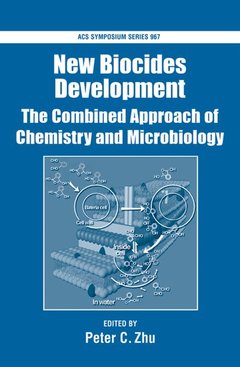Description
New Biocides Development
The Combined Approach of Chemistry and Microbiology
ACS Symposium Series, Vol. 967
Author: Zhu Peter C.
Language: English
Subjects for New Biocides Development:
Approximative price 227.51 €
Subject to availability at the publisher.
Add to cart
Publication date: 04-2008
520 p. · 15.8x23.5 cm · Hardback
520 p. · 15.8x23.5 cm · Hardback
Description
/li>Biography
/li>
This book covers the latest progress on wide topics of biocides R&D: prioncides, biofilms, topical biocides, new biocides synthesis, mechanisms, structure-activity relationship, hospital and topical disinfection, biocides environmental effect, naturally occurring biocides, oxidizing biocides, aldehyde biocides, boron derivative biocides, traditional and non-classical biocides from most known researchers in the fields worldwide. The latest prion inactivation breakthrough discovery by Stanley B. Prusiner's group is also included. Historically, it was the interplay of chemistry and microbiology that helped to discover new biocides and new methods of disinfection. Tight integration of chemistry & microbiology for effective biocides discovery and development is the major theme of this book. This approach makes this book especially valuable for researchers and traditional practitioners alike in biocide field. Recent progress in both chemistry and life sciences has provided tremendous new opportunities to evaluate old and new biocides with new hopes.
Dr. Peter C. Zhu, Research Fellow of ALZA, Johnson & Johnson, is a formulation chemist and an expert of disinfection biocides and pharmaceutical preservatives with numerous patents and publications. He first proposed that the aldehyde penetration mechanism that explained why only a few aldehyde biocides (but not the others) are highly effective for microbial disinfection (Curr. Org. Chem. (2005), 9, 1155). This new theory provides great value for the understanding of biocides action mechanism and for the directions of new antimicrobial agents.
© 2024 LAVOISIER S.A.S.




